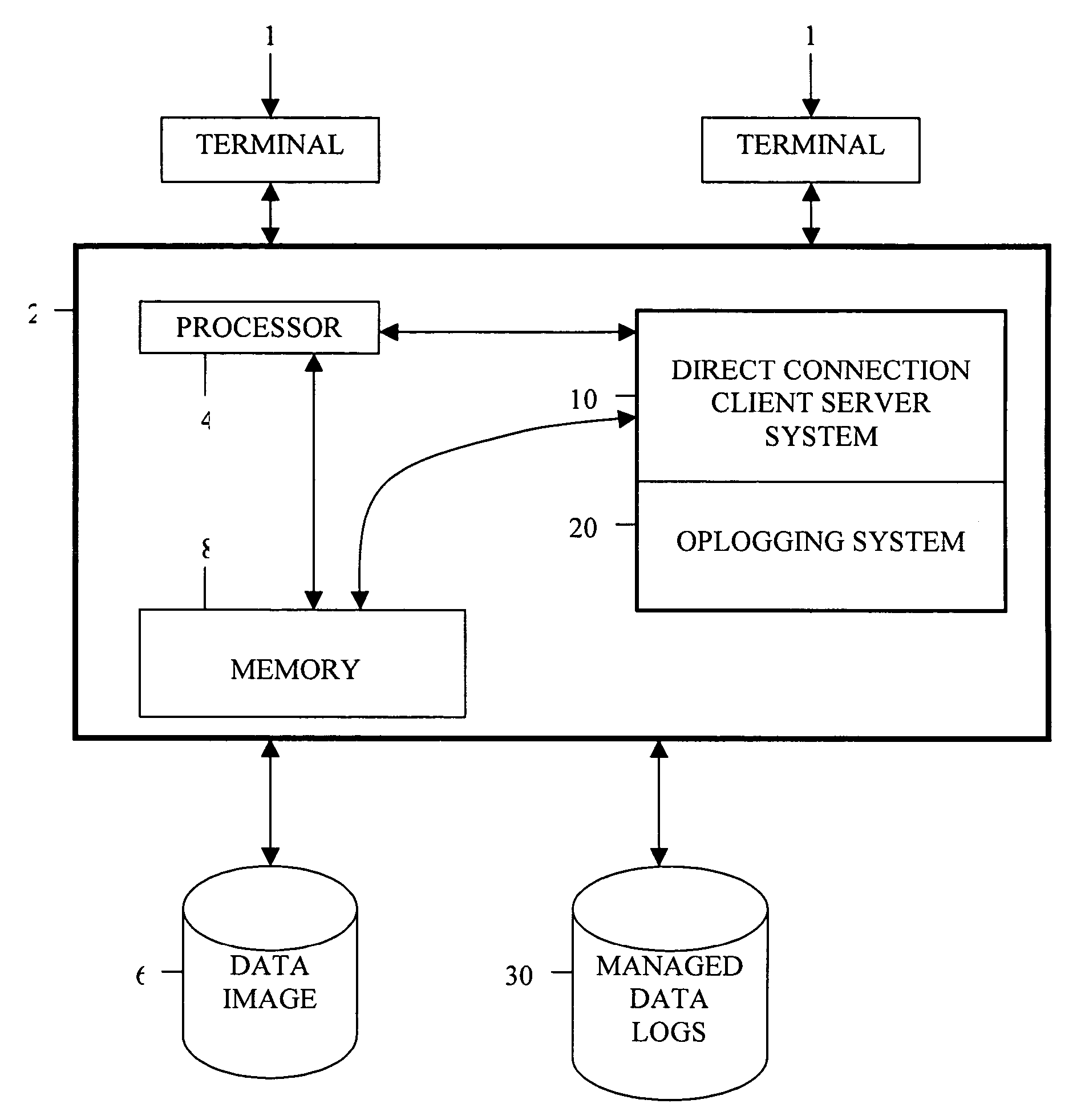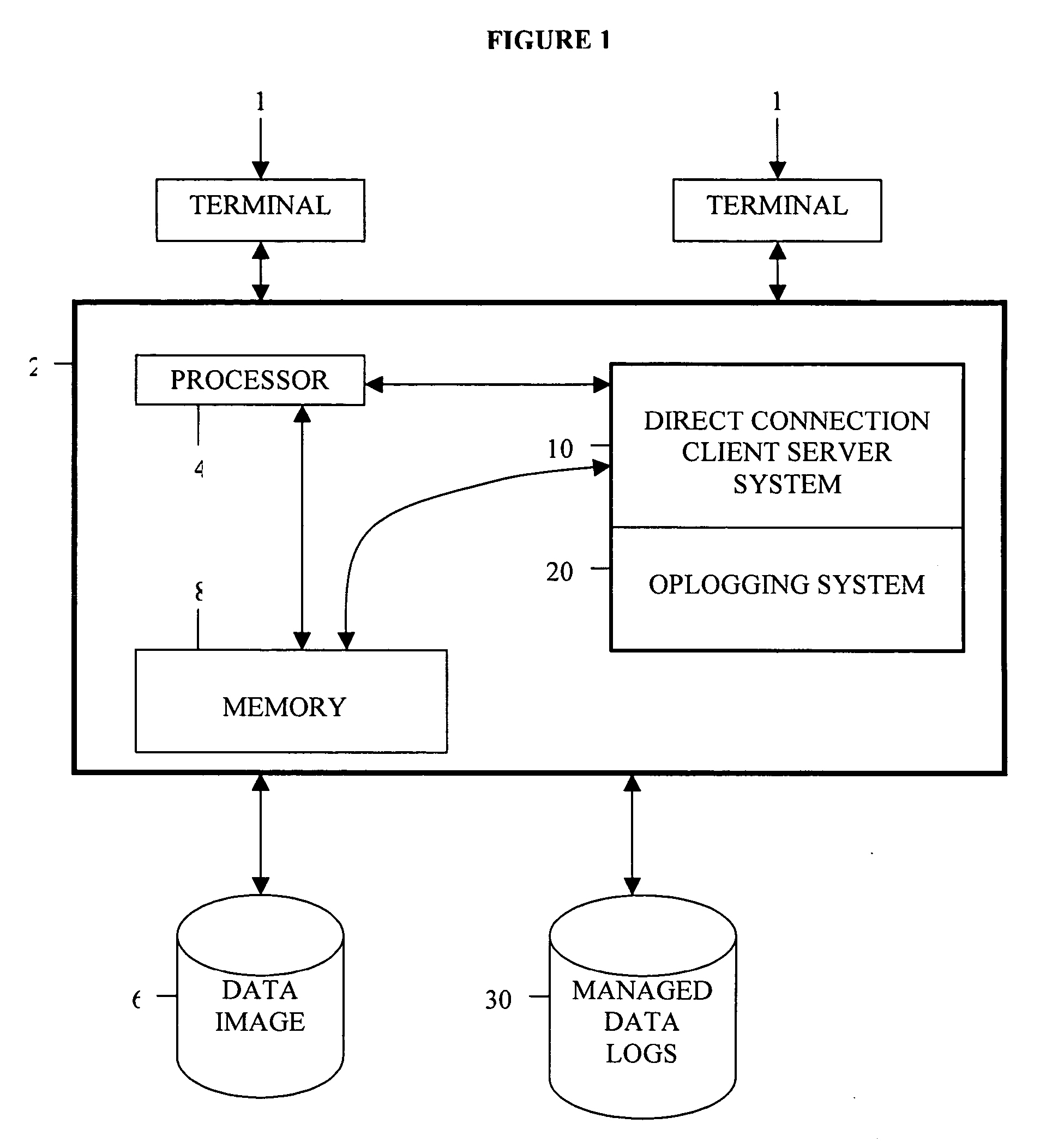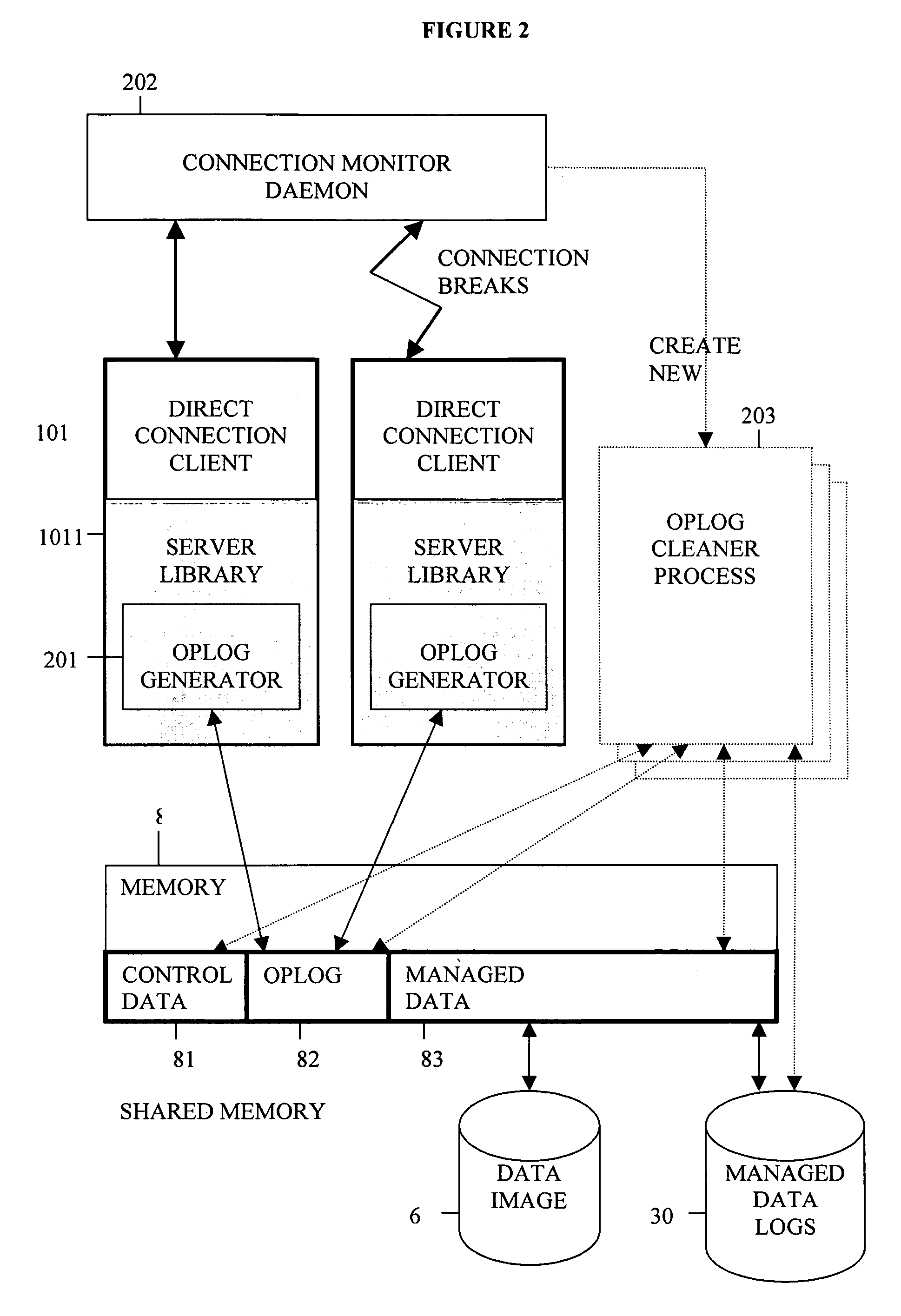Oplogging for online recovery in direct connection client server systems
a client server and recovery technology, applied in the field of recovery in client server systems, can solve the problems of unsatisfactory high-performance environments, large overhead of each client request, and partial modification of control data
- Summary
- Abstract
- Description
- Claims
- Application Information
AI Technical Summary
Benefits of technology
Problems solved by technology
Method used
Image
Examples
Embodiment Construction
[0026] We define these components below and describe each component in detail in rest of this section. The Oplogging System consists of: [0027] Critical Section: A critical section defines where enhanced failure recovery may be required when a direct connection client manipulates control data. [0028] Oplog: To help failure recovery, a log of the control data, known as oplog, is maintained. [0029] Oplog Generator: This is a part of the server library (which is a part of the direct connection client). Executing direct connection client uses the oplog generator to maintain oplogs when executing inside a critical section. [0030] Connection Monitor Process: A process in the server monitors the health of direct connection clients. On failure of a direct connection client, the connection monitor process launches one or more oplog cleaner process (defined below) for undoing the effects of the failed clients. [0031] Oplog Cleaner Process: This process reads the oplogs for the failed client, ...
PUM
 Login to View More
Login to View More Abstract
Description
Claims
Application Information
 Login to View More
Login to View More - R&D
- Intellectual Property
- Life Sciences
- Materials
- Tech Scout
- Unparalleled Data Quality
- Higher Quality Content
- 60% Fewer Hallucinations
Browse by: Latest US Patents, China's latest patents, Technical Efficacy Thesaurus, Application Domain, Technology Topic, Popular Technical Reports.
© 2025 PatSnap. All rights reserved.Legal|Privacy policy|Modern Slavery Act Transparency Statement|Sitemap|About US| Contact US: help@patsnap.com



